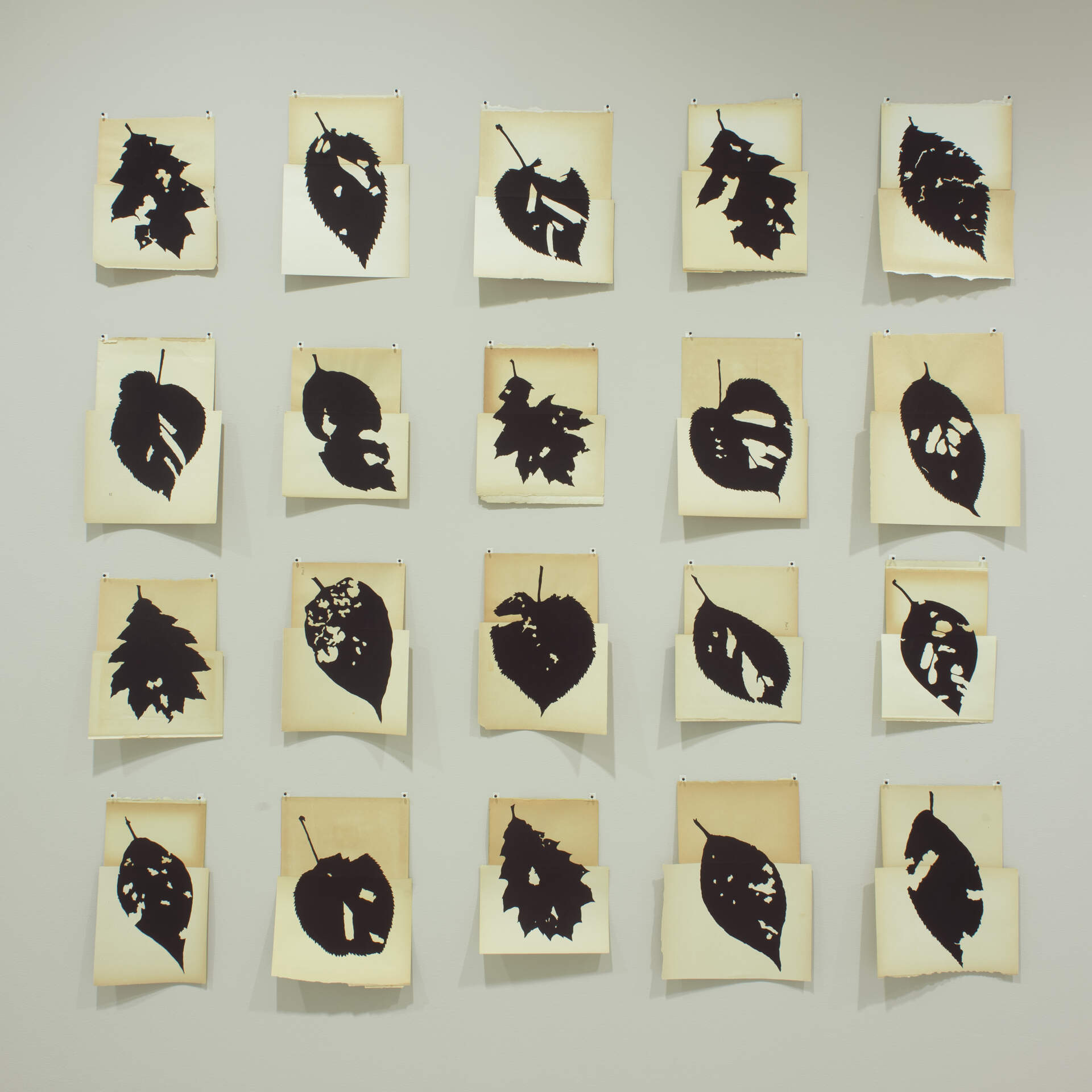Diane Bertolo (b. 1953)The End of Nature is Nature
2012–2017
gouache on vintage paper
20 pieces comprise the whole, overall approx. 57 x 57 inches
Gift of the artist
Labels byAnwiya Youkhanna, MST 622 Researching & Presenting Museum Collections, 2020
This display of leaf designs painted on wood-pulp paper is a manifestation of Diane Bertolo’s pondering on Buddhist philosophy. The material world provides a conscious reflection of itself through an observation of nature and the unique patterns throughout diverse lifeforms. With its seemingly cruel fate of an inevitable end of all things, this work too will slowly decay and, in a fitting manner, be returned to the world from which it came. The wheel of dharma is a case for optimism if one sees beyond an attachment to the present existence, as all beginnings bloom from some other beginning’s end.
For Youths:
Diane Bertolo reflected on the cycle of natural forces in this series of leaf patterns painted on wood-pulp paper. These designs are unique much like snowflakes, a presentation of the harmony of photosynthesis, intersecting the resources of sunlight, water, and a livable space. Part of the material is from old books, which help symbolize the connected growth cycle of plants. The work will slowly decay over time and be recycled back to the dust where it was born. The reflection is as much about the end as it is the beginning; as in a circle, there is no geometric starting point.
-----
The End of Nature is Nature is a series of leaves painted on found wood-pulp paper that over time will eventually crumble and be recycled by the earth. Diane Bertolo wrote: “This work, and many others that I’ve been making over time deals with the Buddhist principle of impermanence, the passage of time, and the fragility of nature. They express a certain reverence for the beauty and spectacle of disintegration while at the same time, provide an environmental cautionary tale.”
Bertolo was part of the original group of artists who established Hallwalls Contemporary Art Center in 1974. She works in a variety of media, including “pixels, paper, sticks and stones to create clocks and calendars that mix chaos with logic as they mark the passage of time; to make small poetic objects that celebrate the ‘everyday’ and to ask questions that are unspeakable in our first language.”
Her work has been exhibited in many museums, including the Albright-Knox Art Gallery (Wish You Were Here: The Buffalo Avant-Garde of the 70s), Burchfield Penney Art Center, Everson Museum of Art, and San Francisco Art Institute, and in numerous media festivals held in Barcelona, Spain and Los Angeles, among others. —Nancy Weekly, 2017
